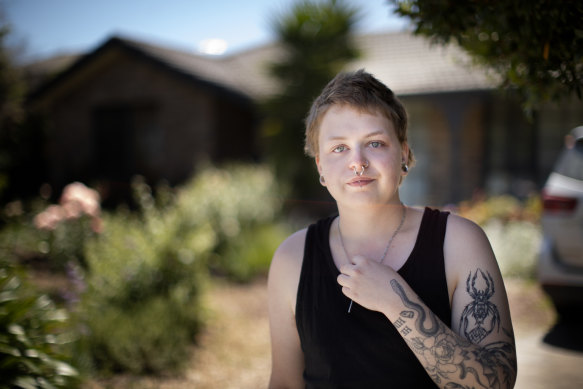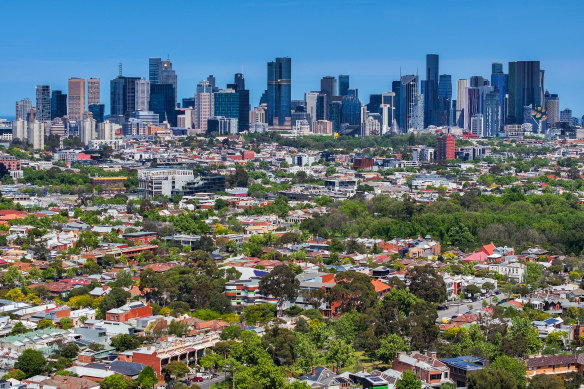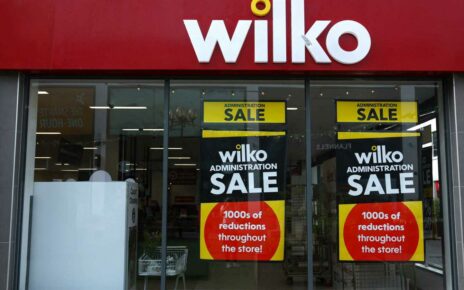Save articles for later
Add articles to your saved list and come back to them any time.
Melbourne’s rental crisis has stripped suburbs within 15 kilometres of the CBD of affordable homes to let, sparking a warning about worsening conditions across the city.
The “drastically urgent” situation has left some renters skipping meals and experts fearing for the city’s liveability as families are forced further from jobs to find affordable housing.
Pierce Boonham is struggling in Melbourne’s rental market.Credit: Simon Schluter
The National Shelter and SGS Economics annual affordability index, published on Tuesday, found that, after softening during the COVID-19 pandemic, Melbourne rents rose by 16 per cent in the year to June.
The report said that had made most inner suburbs increasingly difficult to afford, even for those with an average household income among renters in those areas of $109,000.
A year ago, there were corridors of inner suburbs that qualified as affordable, but those had now “almost completely vanished”.
The analysis found even the average household now had to live about 15 kilometres from the CBD to find affordable rentals.
Although most suburbs were classified as acceptable and not yet unaffordable, the entire city was “rapidly approaching” being moderately unaffordable.
Unaffordable areas require spending more than 30 per cent of gross income on rent, which means a household has insufficient cash for food, heating and cooling, education and transport.
The average property across all of Melbourne would cost 24 per cent of an average Melbourne rental household’s income, which is considered acceptable. Melbourne remained the nation’s most affordable capital city.
The least affordable Melbourne suburbs to rent based on an average Melbourne household’s income were Brighton East, Beaumaris, Albert Park, Middle Park and Balwyn North.
National Shelter chief executive Emma Greenhalgh said low-income households were priced out of swaths of Melbourne, and affordability for hospitality workers reached a historic low.
A year ago, the report found many inner suburbs such as Footscray, North Melbourne, Parkville, Carlton and Hawthorn were affordable. A large corridor from Footscray to Meadow Heights was also available to the average household, the report said.
In the past year, the affordable homes in those areas have almost vanished, with renters priced out of suburbs like Docklands and Southbank and forced to look to suburbs such as Sunshine to find affordable rent.
Affordability in regional Victoria was the lowest recorded since the index began in 2012 after Melburnians left the city during COVID-19 and squashed vacancy rates.
Rental affordability fell 10 per cent across Melbourne in the past year.Credit: Joe Armao
The average rental household in the regions needs to spend 27 per cent of the $81,566 average annual income for those areas to secure an average-priced rental, which is considered moderately unaffordable.
Just three postcodes in the regions, Kerang, Nhill and Numurkah, were considered affordable on that measure.
SGS Economics & Planning principal Ellen Witte said the affordability crunch was hurting families, key workers and low-income households.
“And it’s hurting the economy too. So what we see now is that households have to live further and further away from where the jobs are, and businesses can’t find people to work for them,” Witte said.
“From the building sector, they say we can’t find builders to build the houses that we need for the key workers … So the situation is drastically urgent.”
Surf Coast Shire was least affordable among the regions, particularly Torquay, Barwon Heads and Ocean Grove, where the average rental household spent more than 38 per cent of income on rent. Apollo Bay, Bendigo and Shepparton also had the biggest collapse in affordability.
Pierce Boonham, a jobseeker, spends half his income on rent in a Mill Park share house with three others and skips breakfast as a general rule.
“Then it’s the pretty common dilemma of, do I get clothes I need for work, or do I get groceries, or do I want to see friends. You have to deliberate that with whatever’s left,” Boonham said.
“I’ve got a dental issue right now. I have no idea how I’m going to find money for that.”
The 23-year-old relies on Centrelink while he looks for work in customer service after moving from NSW and hopes to find a new rental with his girlfriend.
“You have to compromise on things because of the lack of options at the moment.”
Brotherhood of St Laurence chief services officer Julie Ware said people were making trade-offs to get by, and governments needed to rapidly increase investment in social and affordable housing.
“There’s a range of impacts that we’re seeing for those people that are on the lowest incomes, experiencing the most disadvantage and really, they’re paying the price for a failed private rental market. We don’t think that’s fair.”
A government spokeswoman said Victorian Labor’s housing statement, delivered in September, would address the housing supply crisis while offering renters more protections.
“Whether you’re renting, buying your first place, upsizing or downsizing – the work we’re doing will mean there’ll be a place you can afford, and that you can call home,” she said.
“Social housing provides a home for many Victorians, and we’re building thousands more through the big housing build, regional housing fund and housing statement initiatives.”
Start the day with a summary of the day’s most important and interesting stories, analysis and insights. Sign up for our Morning Edition newsletter.
Most Viewed in Politics
From our partners
Source: Read Full Article




